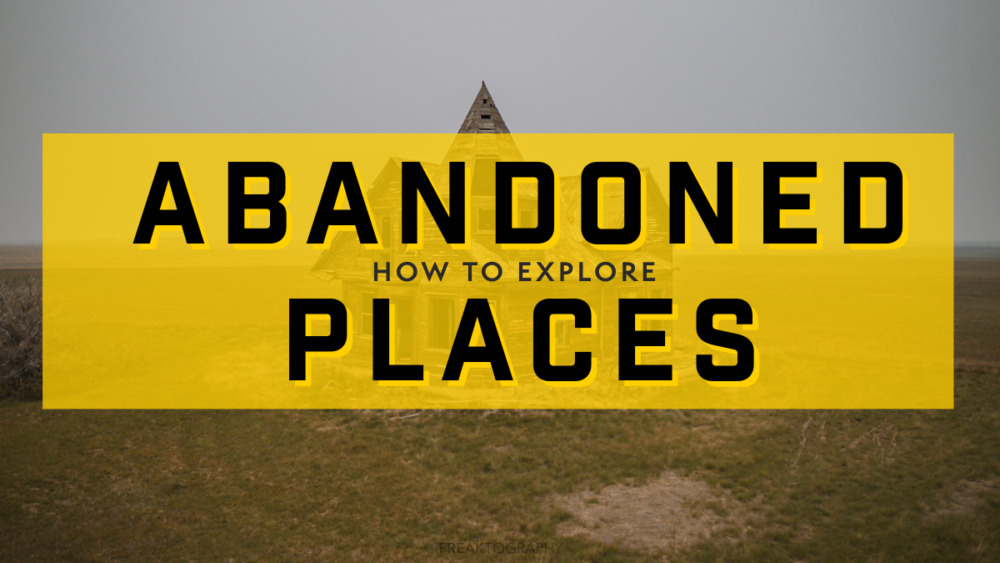Exploring abandoned places has always held a fascination for many, offering a glimpse into the past and often stirring a sense of adventure. From forgotten factories to deserted hospitals, each abandoned site tells a story waiting to be discovered.
However, venturing into these spaces requires more than just curiosity; it demands careful planning, respect for the environment, and above all, a commitment to safety. In this comprehensive guide, we will delve into the world of urban exploration and provide valuable tips for those looking to embark on their own adventures.
Understanding Urban Exploration:
Urban exploration, often abbreviated as “urbex,” is the act of exploring man-made structures, usually abandoned ruins or hidden locations, often in urban areas. It’s not just about finding a derelict building and wandering inside; it’s about uncovering history, experiencing the forgotten, and appreciating the beauty in decay. However, it’s essential to recognize that urban exploration comes with risks, both legal and physical. Therefore, proper preparation and caution are paramount.
Research and Planning: Before setting out on any exploration, thorough research is essential. Start by identifying potential locations you’d like to explore. This could include abandoned buildings, industrial sites, tunnels, or even ghost towns. Utilize online resources, forums, and urbex communities to gather information about the history and current state of these places.
Once you’ve narrowed down your choices, research the legal status of each location. Some abandoned sites may be privately owned or off-limits due to safety concerns. Always prioritize safety and legality; trespassing can lead to fines or even criminal charges. Additionally, consider the structural integrity of the site and any potential hazards such as asbestos, unstable floors, or hazardous materials.
Safety First: Safety should be your top priority when exploring abandoned places. Before entering any site, assess the risks and take necessary precautions. Here are some essential safety tips to keep in mind:
Wear appropriate clothing and footwear: Dress in sturdy, comfortable clothing and closed-toe shoes with good traction. Long pants and sleeves can provide additional protection against hazards like broken glass or sharp metal.
Bring essential safety gear: Carry a flashlight or headlamp with extra batteries, a first-aid kit, and a fully charged mobile phone for emergencies. Consider bringing a respirator mask if there’s a risk of airborne contaminants.
Never explore alone: Always explore with at least one other person. Not only is it safer to have someone with you in case of an accident, but it’s also more enjoyable to share the experience with a friend.
Watch your step: Be mindful of your surroundings and watch out for potential hazards such as unstable floors, holes, or hidden obstacles. Proceed with caution, especially in low-light conditions or areas with limited visibility.
Respect the environment: Avoid disturbing or removing any objects from the site, and never vandalize or graffiti the property. Leave everything as you found it to preserve the integrity of the location for future explorers.
Be aware of your surroundings: Pay attention to signs of instability such as creaking floors, crumbling walls, or signs of recent human activity. Trust your instincts and exit the area if you feel unsafe.
Legal Considerations: While urban exploration can be an exhilarating experience, it’s essential to respect the law and property rights. Trespassing on private property is illegal and can result in fines, arrest, or even injury. Before exploring any location, research its legal status and obtain permission if necessary.
If you encounter security personnel or law enforcement while exploring, remain calm and cooperative. Explain that you are interested in the history and architecture of the site but understand and respect any restrictions in place. Avoid confrontation and comply with any requests or instructions given to you.
Documenting Your Exploration: One of the joys of urban exploration is capturing the beauty and history of abandoned places through photography or videography. However, it’s crucial to do so responsibly and ethically. Here are some tips for documenting your exploration:
Ask permission: If you’re exploring a location that’s open to the public or have obtained permission from the owner, always ask before taking photographs or videos. Respect any restrictions on photography or filming.
Respect privacy: Avoid photographing or filming any personal belongings or identifying information that could invade the privacy of former occupants or owners. Focus on capturing the architecture, decay, and atmosphere of the location.
Capture the details: Pay attention to the unique features and textures of the site, from peeling paint and rusting machinery to graffiti and natural decay. These details help tell the story of the abandoned place and create compelling visuals.
Tell a story: Use your photographs or videos to document the history and significance of the location. Share any interesting facts or anecdotes you’ve learned during your research to provide context for your audience.
Leave no trace: Take care to leave the location undisturbed and as you found it. Avoid moving or rearranging objects for the sake of a better shot, and never leave behind any trash or belongings.
Exploring abandoned places can be a thrilling and rewarding experience for those with a sense of adventure and curiosity. However, it’s essential to approach urban exploration with caution, respect, and a commitment to safety.
By conducting thorough research, prioritizing safety, respecting the law and property rights, and documenting your exploration responsibly, you can enjoy the wonders of abandoned places while preserving their history and integrity for future generations of explorers.
Remember, the journey is just as important as the destination, so take your time, savor the experience, and above all, stay safe. Happy exploring!
